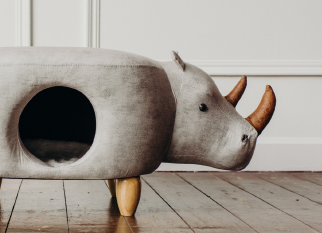What is the impact of the power cord's usage environment on its performance
Power cords play a vital role in electronic equipment and power systems, and their performance directly affects the safety, stability and service life of the equipment. In various use environments, the performance of power cords is affected by various factors such as temperature, humidity, chemical corrosion, mechanical stress and electromagnetic interference.
Effect of temperature on power cord performance
The conductor material of the power cord is usually copper or aluminum, and its resistance changes with temperature. In high temperature environments, the increase in resistance will lead to increased power loss and increased heat generation, which may cause overheating, leading to aging or melting of the insulation material. In low temperature environments, the toughness of the conductor decreases, increasing the risk of breakage. Therefore, when selecting a power cord, its rated temperature range must be considered to ensure that it can still work normally under extreme temperature conditions.
Effect of humidity on power cords
High humidity environments will accelerate the degradation of the insulation material of the power cord and increase the risk of leakage. The penetration of moisture may cause the electrical performance of the insulation material to deteriorate, leading to short circuits or electric shock accidents. In addition, in a humid environment, a water film may form on the surface of the power cord, further increasing the probability of current leakage. To cope with humid environments, it is usually necessary to select power cords with waterproof and moisture-proof properties, and use special insulation materials or outer sheath designs to improve their adaptability.
Effects of chemical corrosion on power cords
In some industrial environments, power cords may be exposed to corrosive gases or liquids, such as acids, alkalis, and salts. These chemicals can cause serious damage to the insulation layer and conductors of the power cord, significantly reducing its service life. Therefore, it is recommended to use power cords made of corrosion-resistant materials, such as polyvinyl chloride (PVC) or polyethylene (PE), in such environments, and fully consider the environmental factors of the installation location during design to ensure the long-term stability of the product.
Effects of mechanical stress on power cords
Power cords may be subjected to mechanical stresses such as stretching, compression, and bending during use, which may cause cracks in the insulation material or breakage of the conductor. In high mechanical stress environments, it is crucial to select power cords with high flexibility and tensile strength. In addition, reasonable wiring methods and fixtures can also effectively reduce the impact of mechanical stress on the power cord and ensure its reliability under various conditions.
Effect of electromagnetic interference on power cords
In an environment with strong electromagnetic interference (EMI), power cords may be affected by external electromagnetic fields, resulting in unstable signal transmission or abnormal operation of equipment. To reduce the impact of electromagnetic interference, you can choose to shield the power cord or use filters and other measures. In addition, reasonable wiring methods, such as staying away from strong electromagnetic sources, can also effectively reduce the degree of interference, thereby improving the performance of the power cord and the stability of the equipment.
Effect of ultraviolet radiation on power cords
In outdoor or direct sunlight environments, ultraviolet radiation can degrade the insulation material of the power cord, causing the material to become brittle, discolored, or even cracked. Therefore, when selecting outdoor power cords, materials with UV resistance should be given priority, and the status of the power cord should be checked regularly, and damaged parts should be replaced in time to ensure its continued reliability in harsh environments.


 English
English русский
русский 中文简体
中文简体 Español
Español













